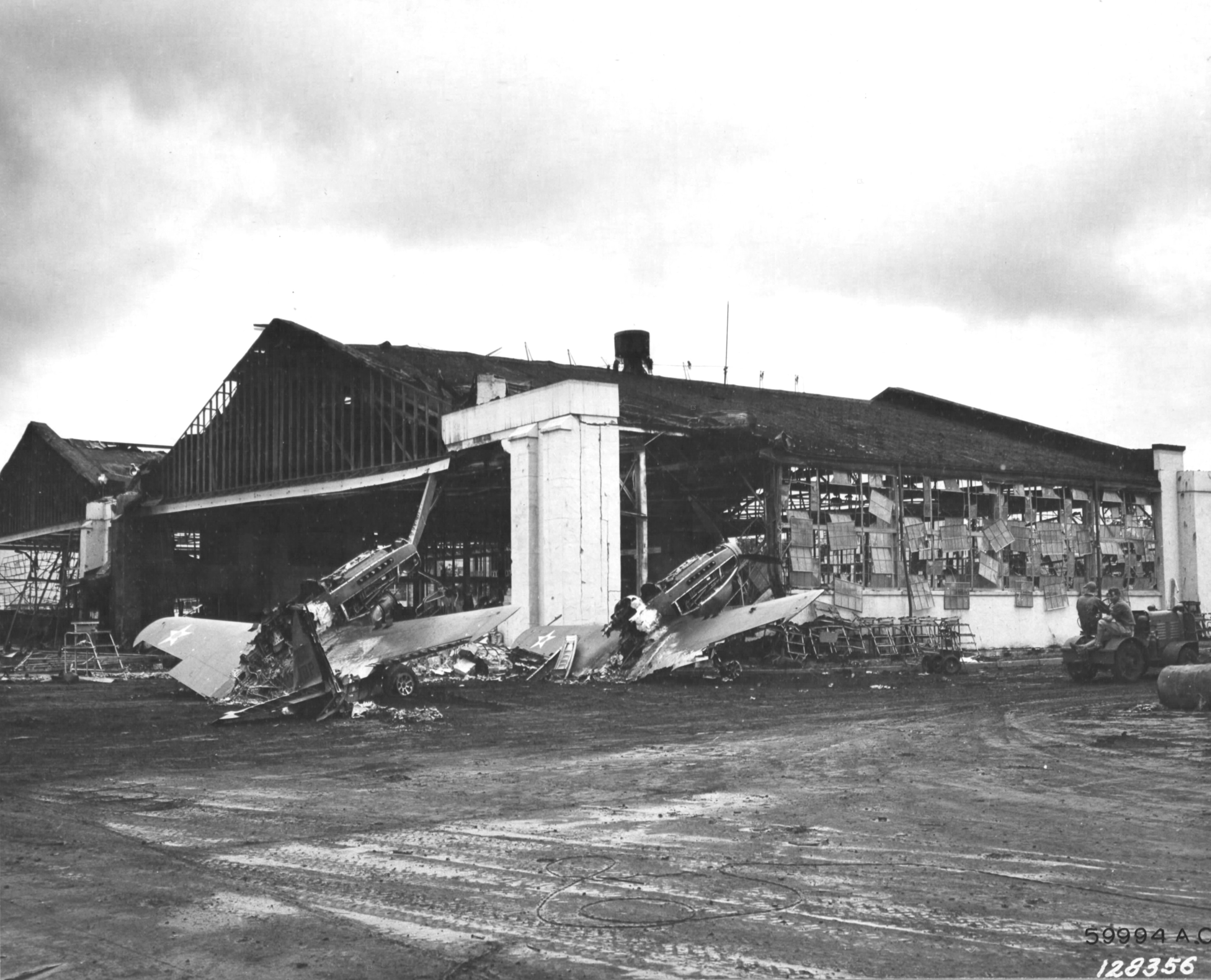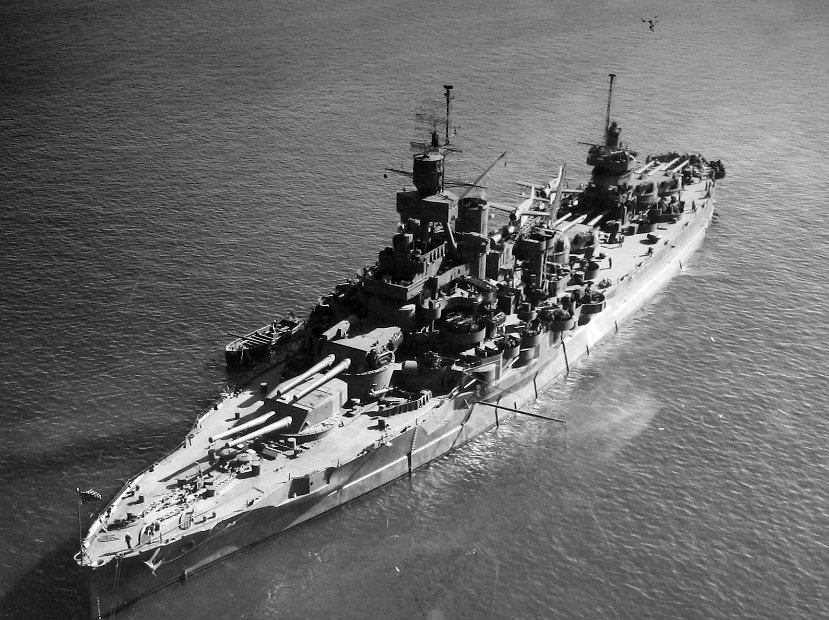A Recognition photo of the CSN Cruiser CSS
Newport News in 1941, shortly before the commencement of Operation
Blackbeard.
With the CSN struggling to recover from its post-GW1 downsizing, a decision was made by Naval command to dedicate resources to vessels that could do significant damage to Union war efforts: while a new Battleship program was begun based on the French
Richelieu-class, Featherston did not try to restore the CSN's prior "Grand Fleet Array" of the pre-GW1 era, which had been designed to operate in sync with the Royal Navy and French Fleet. Featherston acknowledged, perhaps a bit ahead of the curve, that the Grand, single battle these fleets were designed for would, by the nature of their design, never materialize.
"The only thing more useless than a gun that can't shoot straight is a gun that never shoots at all. These highbrow Naval officers with scrambled egg on their hats and heads up their backsides think we and the Brits're just gonna sail out, blast the Yankee and Hun fleets to scrap iron, and sail on home triumphant. Did it never occur to them that the Yankees and Huns had fleets of their own, just as powerful? They almost seemed surprised to discover such a thing. And in their surprise, they got gun-shy. Their grand battleships made excellent Seagull sh*t collectors, and the Yankees sank our freighters, made mockery of our coastline, and merrily sailed all over the Atlantic." -Jake Featherston, "Over Open Sights."
Needless to say, Featherston would not allow the CSN to let the Yankees have it their way again. as part of Operation Blackbeard, He anticipated that US shipments of raw materials via the Great Lakes and occupied Canada would become crucial to their war aims. As the push to Lake Erie would cut the USA's industrial machine in half on land, the CSN, in conjunction with the Royal Navy, would cut off Yankee operations by sea.
Commerce Raiding had been a part of the CSN from it's inception, and the ships's bell from the CSS
Alabama was still rung every year at the graduation ceremony from the CSN Naval Academy in Mobile, Alabama. To this end, Featherston devoted a large section of the CSN's naval construction to cruisers and commerce raiding vessels, leading to the development of the
Mobile-class. Named, fittingly, after both the Capitol of the state of Alabama AND the first Capitol of the CSA, the vessels were devoted to one thing above all: sinking Yankee freighters.
The Four ships of the class, CSS
Mobile, Newport News, Jackson and
Atlanta, began construction in 1935, and were ready upon the outbreak of war. Paired up into two groups, the
Mobile and
Newport News were to deploy north to cover the mouth of the Great Lakes, coordinating with British cruisers to interdict US and German commerce, while
Jackson and
Atlanta deployed south, to protect the Caribbean and Coordinate with the French operating out of French Guiana.
These latter two participated in the recapture of Bermuda and the attack on the Bahamas where, in conjunction with the new Battleship CSS
Louisiana and the Royal Navy, they loaned their heavy guns to bombarding US positions and sinking the few naval assets the US had in the area.
Jackson took three major hits from US aircraft, including a suicide run from an F3A "Katzenjammer" that crashed into her aft turret, and was forced to retire to Havana for repairs, leaving
Atlanta to join the
Louisiana task force.
IN the North, Under the command of Admiral Chester Nimitz, things initially went well for the CSN, where the USA's disarray following the success of Blackbeard meant few transports were in convoy allowing for easy pickings. Indeed, initially the crews joked they didn't need to convene with CSN supply ships, as they were able to forage off the stocks captured from US freighters. Basing themselves in the British Orkney islands, In the first 6 months of the war the two ships successfully sank over 100,000 tons of US commercial shipping.
The
Newport News earned a Battle Star when she dueled and sank USS
Phoenix in December 1941 off Newfoundland during an ambush of an early attempt at convoying, and the
Mobile soon followed suit when she engaged and sank the Destroyers USS
Cassin and USS
Downes in January 1942. A brief lull followed, as the US began moving materials overland via the Canadian railroad network, but what was to follow would ring in naval history for years to come.
In May 1942 the German High Seas Fleet, led by the newly-built Battleship
Bismarck, broke out into the open sea in an effort to draw the Royal Navy into a major battle. Sighted by the Confederate Raiding force as they passed through the Denmark strait, the CS vessels were able to warn the British about the movement of ships and, as per their alliance, they began to shadow the German ships and undertook a series of annoyance attacks to draw off smaller German units.
Things came to a head when the Germans peeled off a force consisting of the New Cruisers
Admiral Hipper and
Nurnburg, older Cruiser
Koln and, most distressingly, the Battlecruiser
Moltke to deal with the Confederate vessels. Badly outgunned, and with the German vessels able to match their speed, the Confederates could not escape.
So they Attacked.
Splitting up, Nimitz banking on the belief that the Germans would likewise divide their forces, each ship soon found themselves facing two opponents. The
Newport News squared off against the
Moltke and
Nurnberg, while the
Mobile faced the
Adm. Hipper and
Koln.
Newport News led her German pursuers into a squall, using her British-designed Radar array to coordinate her gunfire through the rain. While both of the other vessels likewise possessed Radar, their systems weren't quite up to the same standard as the CSN's tech, and, somewhat embarassingly, the
Moltke knoecked her own array offline with her first shot, the vibrations from her guns damaging her system. This led to
Nurnberg needing to feed location data to the
Moltke as well as engage on her own, leading to delays in passing information to her own gunners, resulting in her rate of return fire dropping dramatically.
Newport News soon tipped the scales when a lucky shot took out the
Nurnberg's radar, leaving the two German ships effectively blind. This allowed the
News to close the range dramatically, using her superior maneuverability to keep the Germans guessing as to her location. This was not to say she did not take a few hits of her own, as the
Moltke's powerful 11-inch guns scored a few near-misses that sprung hull plates and punched several holes into the ship's upperworks and funnel.
But finally, in what would come to be known as "The Finest Hour of the Confederate Navy," the
News found herself in a perfect position and, taking advantage of a momentary break in the fog, closed to near point-blank range and unloaded a full broadside into the
Moltke.
Three of her shells passed over the battlecruiser and slammed into the
Nurnberg, taking out the vessel's port propeller, aft turret and rear fire control array. She turned away, making smoke and nearly unmaneuverable.
The six shells that hit
Moltke herself, however, touched off a cataclysm. One shell ignited stored Anti-Aircraft munitions on her deck, lighting the ship up in a bright phosphorescent cloud and igniting several nearby fixtures, as well as momentarily blinding the ship's bridge crew. Another smashed the port barrel of her aftmost turret, touching off a shell that had been loaded and causing a backblast that blew the roof of the turret off. Two struck the base of her bridge, reducing the structure to a shamble of scrap iron, and finally the last two slammed into her aft funnel, blowing out her boilers.
Aflame from stem to stern, dead in the water and unable to return fire, the
Moltke's crew hauled down her colors before another barrage came from the Confederate vessel.
Nimitz and Jefferson Clancy, the
News' captain, allowed the Germans to Abandon ship before sending a barrage into the Moltke's portside below the waterline. The German Battlecruiser would capsize within the hour, taking over 400 of her crew with her.
After sending off a triumphant Radio report to Richmond of their victory, the
News set about picking up the survivors of the battle, intending to hand them over to the British. This effort ended, however, when she received a distress call from the
Mobile: the other Confederate vessel was having a much harder time, having taken several bad hits early in her battle with the German fleet and worse still, two US cruisers had arrived and were headed the
News' way.
Mobile would later be sunk by German carrier aircraft as she limped towards home.
In a moment that some say marred the Confederate victory, Nimitz made the reluctant decision to release the German sailors into the icy water of the North Atlantic as she made her escape to the west. By the time the
Nurnberg had managed to turn back and the US Cruisers
Philadelphia and
Portland had arrived the next morning, over 250 additional members of the
Moltke's crew had succumbed to wounds and exposure and perished.
Despite the US papers making much noise about how she had "abandoned" the Moltke's crew, the
Newport News was the talk of the Confederacy, Hailing Captain Clancy as "The greatest Confederate mariner since Raphael Semmes" and making much noise about the impotence of the German and American navies in the face of the threat. The loss of the
Mobile dampened the celebration somewhat, but when the
News sailed triumphantly into her namesake port a month later after dodging USN patrols and submarines, no less than Jake Featherston himself was there to welcome her home. Admiral Nimitz and Captain Clancy were both awarded the Order of the Virginia for their success, a major propaganda victory in the face of the faltering land war.
it would be among the last for the CSN.
While the German fleet suffered an inglorious defeat at the hands of the British, subsequent US operations soon undid the Allies' early war efforts, and Bermuda and the Bahamas were soon back in US hands. Hot on the heels of the massive failure of Operation Coalscuttle and the Battle of Pittsburgh, the tremendous losses in CSA manpower meant Featherston had to strip men from the Confederate Navy to fill the ranks. This led to the CSN's Northern task force, reorganized after Pittsburgh, to essentially serve as a "fleet in being" as it lacked the manpower and fuel to properly deploy.
The fleet would still be there in 1944, when a report of Featherston's presence led to the US using a Superbomb on the city.









